|
Books Should Be Free Loyal Books Free Public Domain Audiobooks & eBook Downloads |
|
|
Books Should Be Free Loyal Books Free Public Domain Audiobooks & eBook Downloads |
|
History Books |
|---|
|
Book type:
Sort by:
View by:
|
By: Rudyard Kipling (1865-1936) | |
|---|---|
 Under the Deodars
Under the Deodars
| |
By: Rufus Jones (1863-1948) | |
|---|---|
 Nature and Authority of Conscience
Nature and Authority of Conscience
Rufus Matthew Jones was an American religious leader, writer, magazine editor, philosopher, and college professor. He was instrumental in the establishment of the Haverford Emergency Unit . One of the most influential Quakers of the 20th century, he was a Quaker historian and theologian as well as a philosopher. In 1917 he helped found the American Friends Service Committee. This work was delivered as a Swarthmore Lecture in August 1920 and was printed by the Swarthmore Press Ltd. | |
By: Rupert Hughes (1872-1956) | |
|---|---|
 Contemporary American Composers Being a Study of the Music of This Country
Contemporary American Composers Being a Study of the Music of This Country
| |
By: Rupert S. Holland (1878-1952) | |
|---|---|
 Builders of United Italy
Builders of United Italy
Holland 's provides us with an engaging history of the Unification of Italy by exploring the lives of some of its most important figures: Alfieri, Manzoni, Gioberti, Manin, Mazzini, Cavour, Garibaldi, and Victor Emmanuel. - Summary by Ciufi Galeazzi | |
By: Russel Doubleday (1872-1949) | |
|---|---|
 Stories of Inventors
Stories of Inventors
Doubleday chronicles the history of everyday inventions that form the foundation of technology now common through the world. While some of the inventions are no longer used, each example shows how inventors contributed to technology through perseverance, inspiration and clever observations. In each chapter, he gives a clear, understandable background of the technology.Many of the now outdated inventions may have inspired later inventions by meeting emerging demands. For example, Edison's filament bulb is now being phased out by more efficient CFL's, but Edison's contribution to indoor lighting likewise removed the need for inefficient gas-burning lamps... | |
By: Ruth Edna Kelley | |
|---|---|
 The Book of Hallowe'en
The Book of Hallowe'en
This book is intended to give the reader an account of the origin and history of Hallowe’en, how it absorbed some customs belonging to other days in the year,—such as May Day, Midsummer, and Christmas. The context is illustrated by selections from ancient and modern poetry and prose, related to Hallowe’en ideas. | |
By: Ruth Pierce | |
|---|---|
 Trapped in 'Black Russia' Letters June-November 1915
Trapped in 'Black Russia' Letters June-November 1915
| |
By: Ruth Royce | |
|---|---|
 The Children of France A Book of Stories of the Heroism and Self-sacrifice of Youthful Patriots of France During the Great War
The Children of France A Book of Stories of the Heroism and Self-sacrifice of Youthful Patriots of France During the Great War
| |
By: S. (Samuel) Laing (1812-1897) | |
|---|---|
 An Expository Outline of the "Vestiges of the Natural History of Creation" With a Notice of the Author's "Explanations:" A Sequel to the Vestiges
An Expository Outline of the "Vestiges of the Natural History of Creation" With a Notice of the Author's "Explanations:" A Sequel to the Vestiges
| |
By: S. (Sarah) Macnaughtan (1864-1916) | |
|---|---|
 My War Experiences in Two Continents
My War Experiences in Two Continents
| |
By: S. (Sidney) Levett Yeats | |
|---|---|
 Orrain A Romance
Orrain A Romance
| |
By: S. A. (Simon Ansley) Ferrall (-1844) | |
|---|---|
 A Ramble of Six Thousand Miles through the United States of America
A Ramble of Six Thousand Miles through the United States of America
| |
By: S. A. Reilly | |
|---|---|
 Our Legal Heritage
Our Legal Heritage
| |
By: S. Baring-Gould (1834-1924) | |
|---|---|
 Curious Myths of the Middle Ages
Curious Myths of the Middle Ages
This volume is an example of Sabine Baring-Gould's extensive research into the middle ages. This volume of 12 curiosities was one of Baring-Gould's most successful publications. | |
By: S. J. Wilson | |
|---|---|
 The Seventh Manchesters July 1916 to March 1919
The Seventh Manchesters July 1916 to March 1919
| |
By: S. T. Snow | |
|---|---|
 Fifty years with the Revere Copper Co. A Paper Read at the Stockholders' Meeting held on Monday 24 March 1890
Fifty years with the Revere Copper Co. A Paper Read at the Stockholders' Meeting held on Monday 24 March 1890
| |
By: S. Weir Mitchell (1829-1914) | |
|---|---|
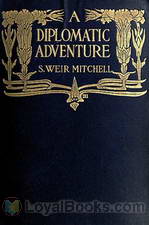 A Diplomatic Adventure
A Diplomatic Adventure
| |
By: Saint Thomas Aquinas (1225-1274) | |
|---|---|
 Summa Theologica - 06 Pars Prima Secundae, On the Last End, On Human Acts
Summa Theologica - 06 Pars Prima Secundae, On the Last End, On Human Acts
The Summa Theologica (or the Summa Theologiae or simply the Summa, written between 1265–1274) is the most famous work of Thomas Aquinas, even though it was never finished. It was intended as a manual for beginners and a compilation of all of the main theological teachings of that time. It summarizes the reasoning for almost all points of Christian theology in the West, which, before the Protestant Reformation, subsisted solely in the Roman Catholic Church. The Summa's topics follow a cycle: the existence of God, God's creation, Man, Man's purpose, Christ, the Sacraments, and back to God... | |
 Summa Theologica - 12 Pars Secunda Secundae, Treatise on Gratuitous Graces and the States of Life
Summa Theologica - 12 Pars Secunda Secundae, Treatise on Gratuitous Graces and the States of Life
The Summa Theologica (or the Summa Theologiae or simply the Summa, written 1265–1274) is the most famous work of Thomas Aquinas (c. 1225–1274) although it was never finished. It was intended as a manual for beginners and a compilation of all of the main theological teachings of that time. It summarizes the reasoning for almost all points of Christian theology in the West, which, before the Protestant Reformation, subsisted solely in the Roman Catholic Church. The Summa's topics follow a cycle: the existence of God, God's creation, Man, Man's purpose, Christ, the Sacraments, and back to God... | |
By: Sami Khalaf Hamarneh (1925-) | |
|---|---|
 History of the Division of Medical Sciences United States National Museum Bulletin 240, Contributions from the Museum of History and Technology, paper 43, 1964
History of the Division of Medical Sciences United States National Museum Bulletin 240, Contributions from the Museum of History and Technology, paper 43, 1964
| |
By: Samual Hall Young (1847-1927) | |
|---|---|
 Alaska Days with John Muir
Alaska Days with John Muir
| |
By: Samuel A. (Samuel Abbott) Green (1830-1918) | |
|---|---|
 Piracy off the Florida Coast and Elsewhere
Piracy off the Florida Coast and Elsewhere
| |
By: Samuel Adams Drake (1833-1905) | |
|---|---|
 The Campaign of Trenton 1776-77
The Campaign of Trenton 1776-77
| |
By: Samuel B. Harding (1866-1927) | |
|---|---|
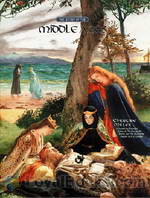 The Story of the Middle Ages
The Story of the Middle Ages
Intended for children 11 to 14 years old, The Story of the Middle Ages relates a little known period of history in an interesting and entertaining way. The author terms the Middle Ages as that period in the history of Europe between the fifth and fifteenth centuries. Its beginning is marked by the decline and fall of the mighty Roman Empire and its end is generally thought to be the dawn of the Renaissance or the Age of Discovery. The Middle Ages are also divided by historians into the Early, High and Late Middle Ages... | |
By: Samuel Butler (1835-1902) | |
|---|---|
 Evolution, Old & New Or, the Theories of Buffon, Dr. Erasmus Darwin and Lamarck, as compared with that of Charles Darwin
Evolution, Old & New Or, the Theories of Buffon, Dr. Erasmus Darwin and Lamarck, as compared with that of Charles Darwin
| |
By: Samuel Cheetham | |
|---|---|
 History of the Christian church
History of the Christian church
The intention of this work is to provide a sketch of the History of the Church in the first six centuries of its existence, resting throughout on original authorities, and also giving references to the principal modern works which have dealt specially with its several portions. It is hoped that it may be found to supply a convenient summary for those who can give but little time to the study, and also to serve as a guide for those who desire to make themselves acquainted with the principal documents from which the History is drawn. | |
By: Samuel de Champlain (1567-1635) | |
|---|---|
 Voyages of Samuel De Champlain — Volume 01
Voyages of Samuel De Champlain — Volume 01
| |
By: Samuel G. (Samuel Gamble) Bayne (1844-1924) | |
|---|---|
 A Fantasy of Mediterranean Travel
A Fantasy of Mediterranean Travel
| |
By: Samuel G. (Samuel Griswold) Goodrich (1793-1860) | |
|---|---|
 Peter Parley's Tales About America and Australia
Peter Parley's Tales About America and Australia
| |
By: Samuel George Morton (1799-1851) | |
|---|---|
 Some Observations on the Ethnography and Archaeology of the American Aborigines
Some Observations on the Ethnography and Archaeology of the American Aborigines
| |
By: Samuel Johnson | |
|---|---|
 Plan and Preface to a Dictionary of English
Plan and Preface to a Dictionary of English
The published dictionary was a huge book: with pages nearly 1½ feet tall and 20 inches wide, it contained 42,773 words; it also sold for the huge price of £4/10s. ($400?). It would be years before “Johnson’s Dictionary”, as it came to be known, would ever turn a profit; authors’ royalities being unknown at that time, Johnson, once his contract to deliver the book was fulfilled, received no further monies connected to the book. Johnson, once again a freelance writer, albeit now a famous one, faced a grim hand-to-mouth existence; however, in July 1762 the twenty-four year old King George III granted Johnson an annual pension of £300... | |
 Johnson's Lives of the Poets
Johnson's Lives of the Poets
| |
 Lives of the English Poets : Waller, Milton, Cowley
Lives of the English Poets : Waller, Milton, Cowley
| |
 Lives of the English Poets : Prior, Congreve, Blackmore, Pope
Lives of the English Poets : Prior, Congreve, Blackmore, Pope
| |
By: Samuel L. (Samuel Lorenzo) Knapp (1783-1838) | |
|---|---|
 Memoirs of General Lafayette
Memoirs of General Lafayette
| |
By: Samuel L. Bensusan (1872-1958) | |
|---|---|
 Morocco
Morocco
| |
By: Samuel Marinus Zwemer (1867-1952) | |
|---|---|
 Topsy-Turvy Land Arabia Pictured for Children
Topsy-Turvy Land Arabia Pictured for Children
| |
By: Samuel Merwin (1874-1936) | |
|---|---|
 The Road to Frontenac
The Road to Frontenac
| |
By: Samuel Murray Hussey (1824-) | |
|---|---|
 The Reminiscences of an Irish Land Agent
The Reminiscences of an Irish Land Agent
| |
By: Samuel Pepys (1633-1703) | |
|---|---|
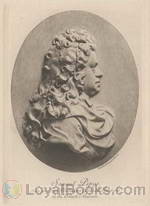 Diary of Samuel Pepys
Diary of Samuel Pepys
| |
By: Samuel Peter Orth (1873-1922) | |
|---|---|
 The Boss and the Machine; a chronicle of the politicians and party organization
The Boss and the Machine; a chronicle of the politicians and party organization
| |
 The Armies of Labor A chronicle of the organized wage-earners
The Armies of Labor A chronicle of the organized wage-earners
| |
By: Samuel R. Crockett (1860-1914) | |
|---|---|
 The Black Douglas
The Black Douglas
| |
By: Samuel Rawson Gardiner (1829-1902) | |
|---|---|
 A Student's History of England, v. 1 (of 3) From the earliest times to the Death of King Edward VII
A Student's History of England, v. 1 (of 3) From the earliest times to the Death of King Edward VII
| |
By: Samuel Smiles (1812-1904) | |
|---|---|
 Lives of the Engineers (George and Robert Stephenson)
Lives of the Engineers (George and Robert Stephenson)
George Stephenson did not invent the steam engine, that was due to Newcomen and later to James Watt. He did not invent the steam locomotive, that was due to a number of people including Cugnot, Trevithick and others. He did not invent the Railway. Railways or tramways had been in use for two hundred years before Stephenson.The reason why Stephenson was known as ‘The father of the steam locomotive’ was that he took a primitive, unreliable and wholly uneconomic device and turning it into an efficient... | |
By: Samuel Taylor Coleridge (1772-1834) | |
|---|---|
 Shakespeare, Ben Jonson, Beaumont and Fletcher
Shakespeare, Ben Jonson, Beaumont and Fletcher
| |
By: Sara Jeannette Duncan (1861-1922) | |
|---|---|
 The Story of Sonny Sahib
The Story of Sonny Sahib
| |
By: Sara Yorke Stevenson (1847-1921) | |
|---|---|
 Maximilian in Mexico A Woman's Reminiscences of the French Intervention 1862-1867
Maximilian in Mexico A Woman's Reminiscences of the French Intervention 1862-1867
| |
By: Sarah Ellen Blackwell (1828-) | |
|---|---|
 A Military Genius Life of Anna Ella Carroll of Maryland
A Military Genius Life of Anna Ella Carroll of Maryland
| |
By: Sarah H. (Sarah Hopkins) Bradford (1818-) | |
|---|---|
 Harriet, the Moses of Her People
Harriet, the Moses of Her People
| |
By: Sarah Knowles Bolton (1841-1916) | |
|---|---|
 Lives of Poor Boys Who Became Famous
Lives of Poor Boys Who Became Famous
These characters have been chosen from various countries and from varied professions, that the youth who read this book may see that poverty is no barrier to success. It usually develops ambition, and nerves people to action. Life at best has much of struggle, and we need to be cheered and stimulated by the careers of those who have overcome obstacles.If Lincoln and Garfield, both farmer-boys, could come to the Presidency, then there is a chance for other farmer-boys. If Ezra Cornell, a mechanic, could become the president of great telegraph companies, and leave millions to a university, then other mechanics can come to fame... | |
 Famous American Statesmen
Famous American Statesmen
A sketch of the lives of some of America's early Statesmen: George Washington, Benjamin Franklin, Thomas Jefferson, Alexander Hamilton, Andrew Jackson, Daniel Webster, Henry Clay, Charles Sumner, Ulysses S. Grant, and James A. Garfield. | |
By: Sarah Morgan Dawson (1842-1909) | |
|---|---|
 A Confederate Girl's Diary
A Confederate Girl's Diary
Sarah Morgan Dawson was a young woman of 20 living in Baton Rouge, Louisiana, when she began this diary. The American Civil War was raging. Though at first the conflict seemed far away, it would eventually be brought home to her in very personal terms. Her family's loyalties were divided. Sarah's father, though he disapproved of secession, declared for the South when Louisiana left the Union. Her eldest brother, who became the family patriarch when his father died in 1861, was for the Union, though he refused to take up arms against his fellow Southerners... | |
By: Sarah Orne Jewett (1849-1909) | |
|---|---|
 Country of the Pointed Firs
Country of the Pointed Firs
The Country of the Pointed Firs (1896) is considered Jewett’s finest work, described by Henry James as her “beautiful little quantum of achievement.” Despite James’s diminutives, the novel remains a classic. Because it is loosely structured, many critics view the book not as a novel, but a series of sketches; however, its structure is unified through both setting and theme. Jewett herself felt that her strengths as a writer lay not in plot development or dramatic tension, but in character development... | |
By: Sarah Tytler (1827-1914) | |
|---|---|
 The Old Masters and Their Pictures For the Use of Schools and Learners in Art
The Old Masters and Their Pictures For the Use of Schools and Learners in Art
| |
By: Scott Nearing (1883-1983) | |
|---|---|
 The American Empire
The American Empire
| |
 The Next Step A Plan for Economic World Federation
The Next Step A Plan for Economic World Federation
| |
By: Seabury Quinn (1889-1969) | |
|---|---|
 Servants of Satan
Servants of Satan
Noted weird fiction author Seabury Quinn brings to life true tales of witch trial persecution within the pages of Weird Tales magazine! - Summary by Ben Tucker | |
By: Senator Cassiodorus (487?-585?) | |
|---|---|
 The Letters of Cassiodorus Being A Condensed Translation Of The Variae Epistolae Of Magnus Aurelius Cassiodorus Senator
The Letters of Cassiodorus Being A Condensed Translation Of The Variae Epistolae Of Magnus Aurelius Cassiodorus Senator
| |
By: Seton Churchill | |
|---|---|
 General Gordon A Christian Hero
General Gordon A Christian Hero
| |
By: Shelby M. (Shelby Moore) Cullom (1829-1914) | |
|---|---|
 Fifty Years of Public Service Personal Recollections of Shelby M. Cullom, Senior United States Senator from Illinois
Fifty Years of Public Service Personal Recollections of Shelby M. Cullom, Senior United States Senator from Illinois
| |
By: Sherwood Eddy (1871-1963) | |
|---|---|
 With Our Soldiers in France
With Our Soldiers in France
| |
By: Sidney Heath (1872-) | |
|---|---|
 Bournemouth, Poole & Christchurch
Bournemouth, Poole & Christchurch
| |
 The Cornish Riviera
The Cornish Riviera
| |
 Winchester
Winchester
| |
 Exeter
Exeter
Exeter, county town of Devon, is one of England's most historic cities with remains of the Roman occupation and medieval times still on view. Exeter cathedral, founded in 1050 and completed 400 years later, has the longest uninterrupted vaulted ceiling in the country. This short book in Blackie & Sons' Beautiful England series details the history of the city and it many sites of interest, with chapters on the city, the cathedral and the River Exe. Readers who can access the printed version of the book on Internet Archive, may enjoy looking at E. W Haslehursts' 12 colour illustrations while listening to this audiobook. - Summary by Phil Benson | |
By: Sidney Lee (1859-1926) | |
|---|---|
 Shakespeare and the Modern Stage with Other Essays
Shakespeare and the Modern Stage with Other Essays
| |
By: Sidney Lewis Gulick (1860-1945) | |
|---|---|
 Evolution Of The Japanese, Social And Psychic
Evolution Of The Japanese, Social And Psychic
| |
By: Silvio Pellico (1789-1854) | |
|---|---|
 My Ten Years' Imprisonment
My Ten Years' Imprisonment
| |
By: Simon Dubnow (1860-1941) | |
|---|---|
 History of the Jews in Russia and Poland, Volume 1 [of 3] From the Beginning until the Death of Alexander I (1825)
History of the Jews in Russia and Poland, Volume 1 [of 3] From the Beginning until the Death of Alexander I (1825)
Simon Dubnow was born in 1860 to a poor Jewish family in Belarussian town of Mstsislaw and later became authority of Jewish history and an activist. Due to his Jewish origin, he had to move to St.Petersburg, Odessa, Vilna, St.Petersburg, Kaunas, Berlin and finally Riga after Hitler came to power. When Nazi troops occupied Latvia 1941, he was moved with thousands of other Jews to Riga ghetto and was eventually killed. His life is a symbol of Jewish suffering in Eastern Europe in the first half of 20 century. This book is one of the most extensive and thorough study of the glory and suffering of the Jews in Russia and Poland for 2000 years. - Summary by S. S. Kim | |
 History of the Jews in Russia and Poland Volume III, From the Accession of Nicholas II until the Present Day
History of the Jews in Russia and Poland Volume III, From the Accession of Nicholas II until the Present Day
Simon Dubnow was born in 1860 to a poor Jewish family in Belarussian town of Mstsislaw and later became authority of Jewish history and an activist. Due to his Jewish origin, he had to move to St.Petersburg, Odessa, Vilna, St.Petersburg, Kaunas, Berlin and finally Riga. When Nazi troops occupied Latvia 1941, he was moved with thousands of other Jews to Riga ghetto and was eventually killed. His life is a symbol of Jewish suffering in Eastern Europe. In this book Jews have been migrating from Germany... | |
By: Simon M. Dubnow (1860-1941) | |
|---|---|
 Jewish History : an essay in the philosophy of history
Jewish History : an essay in the philosophy of history
| |
By: Sinclair Lewis (1885-1951) | |
|---|---|
 Main Street
Main Street
A social satire, Main Street became a best-seller soon after its publication, fascinating readers with its biting humor and realistic portrayal of small-town communities. Published in 1920, the novel follows Carol Milford as she moves to a conventional small town, where she encounters its conceited residents characterized by their ignorance, hypocrisy, and smugness, while simultaneously being the target of their careless ridicule. Furthermore, the novel efficiently exemplifies the dividing line between the sophisticated urban setting and the conventionally governed small-town, as it tackles issues of embracing differences, social class, disillusionment, feminism, and community... | |
 The Trail of the Hawk
The Trail of the Hawk
| |
By: Sir Arthur Conan Doyle (1859-1930) | |
|---|---|
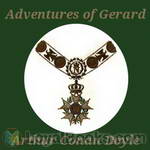 The Adventures of Gerard
The Adventures of Gerard
These lesser known stories were penned by Conan Doyle during the period between killing off Sherlock Holmes in 1893 and reluctantly resurrecting him some ten years later. The swashbuckling, eponymous hero, Etienne Gerard, is one of Napoleon's gallant French Hussars, who considers himself the finest of them all. Through these "Boys Own Adventures", Conan Doyle pokes gentle fun at both the French and the English. This is the second volume containing eight adventures. | |
 Sir Nigel
Sir Nigel
By 1348 the House of Loring has fallen on hard times. Together, the Black Death and the greedy monks of Waverley have bled away all of the Loring wealth. Even the manor house will have to go to pay their debts.Then a chance encounter with the King of England provides Nigel, the last of the Lorings, with the chance to seek his fortune in the constant wars with France. But more importantly for Nigel it also means that he may be able to do the "three small deeds" that will show he is worthy to ask for the hand of the Lady Mary in marriage.Filled with chivalry, humour, and high romance, Sir Nigel is simply a rattling good yarn. | |
 Visit to Three Fronts: June 1916
Visit to Three Fronts: June 1916
In the course of May 1916, the Italian authorities expressed a desire that some independent observer from Great Britain should visit their lines and report his impressions. It was at the time when our brave and capable allies had sustained a set-back in the Trentino owing to a sudden concentration of the Austrians, supported by very heavy artillery. I was asked to undertake this mission. In order to carry it out properly, I stipulated that I should be allowed to visit the British lines first, so that I might have some standard of comparison... | |
 The Great Boer War
The Great Boer War
| |
 The War in South Africa Its Cause and Conduct
The War in South Africa Its Cause and Conduct
| |
By: Sir Charles G. D. Roberts (1860-1943) | |
|---|---|
 Heart of the Ancient Wood
Heart of the Ancient Wood
A woman and her daughter take refuge in a cabin deep in the Canadian forest. This is a tale of survival from the land, friendship and love. - Summary by Czandra | |
By: Sir Edward Shepherd Creasy (1812-1878) | |
|---|---|
 Fifteen Decisive Battles of the World
Fifteen Decisive Battles of the World
This work is Edward Creasy's best known fundamental work of history. It describes in detail 15 battles of world history, beginning with the Battle of Marathon of 490 BC and ending with the Battle of Waterloo of 1815. Each chapter is illustrated with rich historical detail and a timeline of events. | |
By: Sir Frederick Maurice Powicke (1879-1963) | |
|---|---|
 Bismarck and the Origin of the German Empire
Bismarck and the Origin of the German Empire
Despite its brevity, this Little Blue Book #142 by the Oxford historian, Sir F.M. Powicke, provides a valuable overview of the political history of Germany from medieval to modern times, culminating in the career of Otto von Bismarck , the Prussian Junker who masterminded the unification of Germany and served as its first Chancellor. - Summary by Pamela Nagami, M.D. | |
By: Sir Grafton Elliot Smith (1871-1937) | |
|---|---|
 Tutankhamen: and the Discovery of His Tomb by the Late Earl of Carnarvon and Mr. Howard Carter
Tutankhamen: and the Discovery of His Tomb by the Late Earl of Carnarvon and Mr. Howard Carter
“Never before in the history of archaeological inquiry has any event excited such immediate and world-wide interest as Mr. Howard Carter's discovery of Tutankhamen's tomb in November 1922. It gives us a new revelation of the wealth and luxury of Egyptian civilization during its most magnificent period. In beauty and design and perfection of craftsmanship, Tutankhamen's funerary equipment is indeed a new revelation of the ancient Egyptians' artistic feeling and technical skill.” “At the time of Tutankhamen the great peoples that had built up civilization were losing their dominant position... | |
By: Sir Henry Morton Stanley (1841-1904) | |
|---|---|
 How I Found Livingstone
How I Found Livingstone
Sir Henry Morton Stanley is famously quoted for saying “Dr Livingstone, i Presume?”. Born in Wales, he migrated over to the United States at the age of 18, and eventually became an overseas correspondent for the New York Herald. In 1869 Stanley was told by James Gordon Bennett Jr to find Livingstone, a scottish missionary and explorer, who was lost in central Africa. When Stanley commented on the cost Bennett’s reply was: “Well, I will tell you what you will do. Draw a thousand pounds now; and when you have gone through that, draw another thousand, and when that is spent, draw another thousand, and when you have finished that, draw another thousand, and so on; but, FIND LIVINGSTONE. | |
By: Sir John Barrow (1764-1848) | |
|---|---|
 Eventful History of the Mutiny and Piratical Seizure of H.M.S. Bounty
Eventful History of the Mutiny and Piratical Seizure of H.M.S. Bounty
On December 31 1787, the HMS Bounty, a small sailing vessel embarked from Spithead Harbor, England bound for Tahiti. Her mission was sponsored by the Royal Society in London and aimed at picking up breadfruit plants and fruit from Tahiti and conveying them to the West Indies, where it was hoped they would take root and become a commercial crop. The Bounty was an old ship with a young captain and 46 young officers. The captain's cabin was converted into a potting shed for the expected breadfruit cargo... | |
By: Sir Joseph Pope (1854-1926) | |
|---|---|
 Chronicles of Canada Volume 29 - The Day of Sir John Macdonald: A Chronicle of the First Prime Minister of the Dominion
Chronicles of Canada Volume 29 - The Day of Sir John Macdonald: A Chronicle of the First Prime Minister of the Dominion
A biography of Sir John A. Macdonald, the first Prime Minister of Canada. It was written by the man who served as Macdonald's private secretary from 1882 to 1891. | |
By: Sir Walter Scott (1771-1832) | |
|---|---|
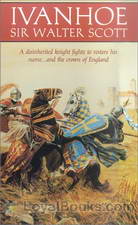 Ivanhoe
Ivanhoe
Medieval England in the 12th century. The evil Prince John rules England in place of his brother, the noble Richard the Lionheart, who is being held in an Austrian prison by Duke Leopold of Austria, while returning from one of his Crusades. Under the avaricious and Machiavellian John, the Norman aristocrats are in constant conflict with the native Saxon people. Ivanhoe by Sir Walter Scott is set in these turbulent times. The eponymous hero, Wilfred of Ivanhoe, the son of a Saxon nobleman has been disinherited by his father for following King Richard into war... | |
 Rob Roy
Rob Roy
Rob Roy is a historical novel by Walter Scott. It is narrated by Frank Osbaldistone, the son of an English merchant who travels first to the North of England, and subsequently to the Scottish Highlands to collect a debt stolen from his father. On the way he encounters the larger-than-life title character of Rob Roy MacGregor. Though Rob Roy is not the lead character (in fact the narrative does not move to Scotland until half way through the book) his personality and actions are key to the development of the novel. | |
 Kenilworth
Kenilworth
An Elizabethan era historical novel by Scotland’s master of fiction, Sir Walter Scott. With a cast of historical and created characters, including the Queen herself, Scott presents the sad history and tragic consequences of the secretive marriage of young Amy Robsart and the Earl of Leicester. (Summary by SK) | |
 Fortunes of Nigel
Fortunes of Nigel
During the turbulent moment in English history involving King James 1 and 6, Nigel Olifaunt, a Scottish lord, seeks to protect his family home and holdings, but meets with recalcitrance and treachery, which eventually results in his imprisonment. But there are forces of good that help to set him free and right injustices. | |
By: Smedley Butler (1881-1940) | |
|---|---|
 War Is a Racket
War Is a Racket
Marine Maj. Gen. Smedley Butler's expose of American Corporate Imperialism. Butler said, “I served in all commissioned ranks from second lieutenant to Major General. And during that period I spent most of my time being a high-class muscle man for Big Business, for Wall Street, and for the bankers. In short, I was a racketeer for capitalism. I suspected I was just part of the racket all the time. Now I am sure of it.” - Summary by John Greenman and https://www.americanswhotellthetruth.org/portraits/major-general-smedley-butler | |
By: Solon J. (Solon Justus) Buck (1884-1962) | |
|---|---|
 The Agrarian Crusade; a chronicle of the farmer in politics
The Agrarian Crusade; a chronicle of the farmer in politics
| |
By: Songling Pu (1640-1715) | |
|---|---|
 Strange Stories From a Chinese Studio, volume 1
Strange Stories From a Chinese Studio, volume 1
"Strange Tales from a Chinese Studio" is a collection of nearly five hundred mostly supernatural tales written by Pu Songling during the early Qing Dynasty. It was written in Classical Chinese rather than Vernacular Chinese. Pu is believed to have completed the majority of the tales sometime in 1679, though he could have added entries as late as 1707. He borrows from a folk tradition of oral storytelling to put to paper a series of captivating, colorful stories, where the boundary between reality and the odd or fantastic is blurred... | |
 Strange Stories from a Chinese Studio, Volume 2
Strange Stories from a Chinese Studio, Volume 2
"Strange Tales from a Chinese Studio" or "Strange Tales of Liaozhai" is a collection of nearly five hundred mostly supernatural tales written by Pu Songling during the early Qing Dynasty. It was written in Classical Chinese rather than Vernacular Chinese. Pu is believed to have completed the majority of the tales sometime in 1679, though he could have added entries as late as 1707. He borrows from a folk tradition of oral storytelling to put to paper a series of captivating, colorful stories, where the boundary between reality and the odd or fantastic is blurred... | |
By: Sophie May (1833-1906) | |
|---|---|
 Captain Horace
Captain Horace
| |